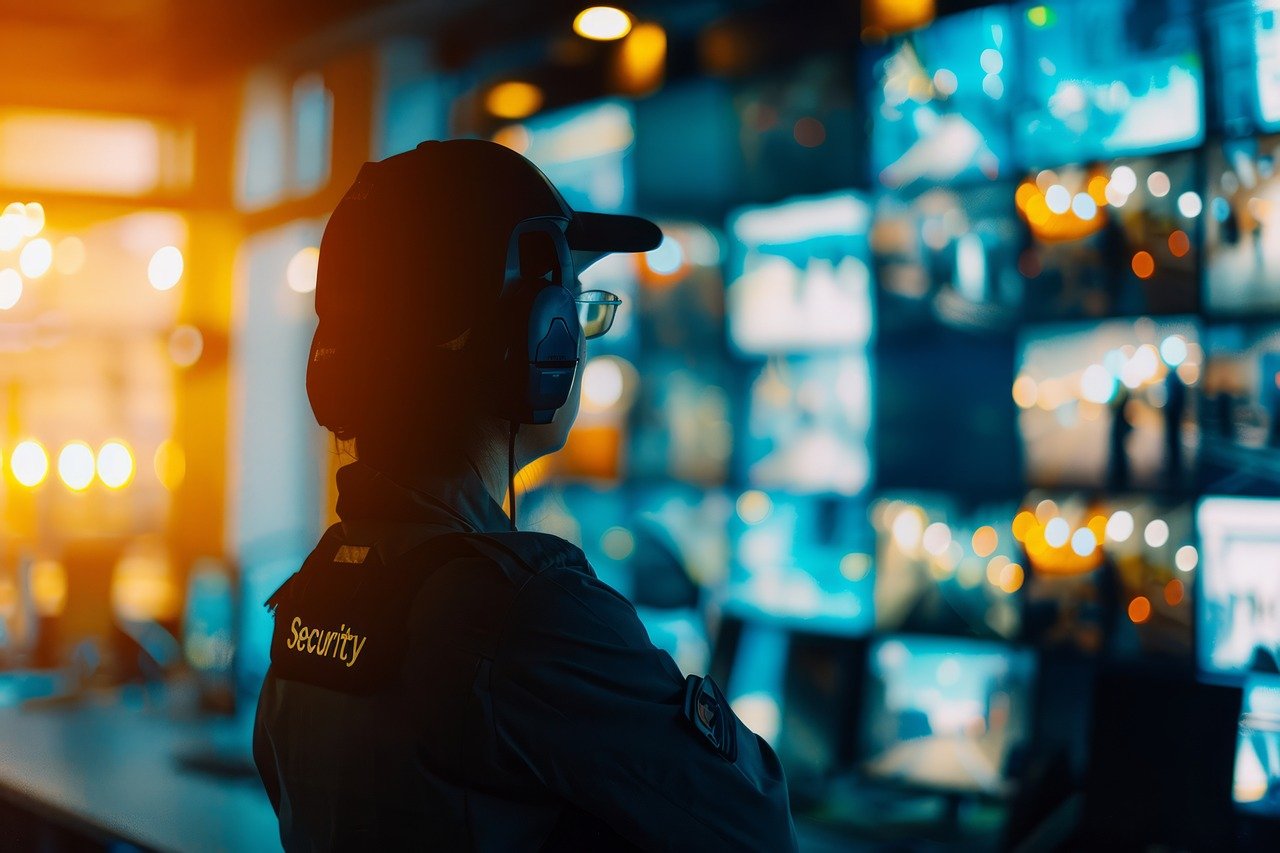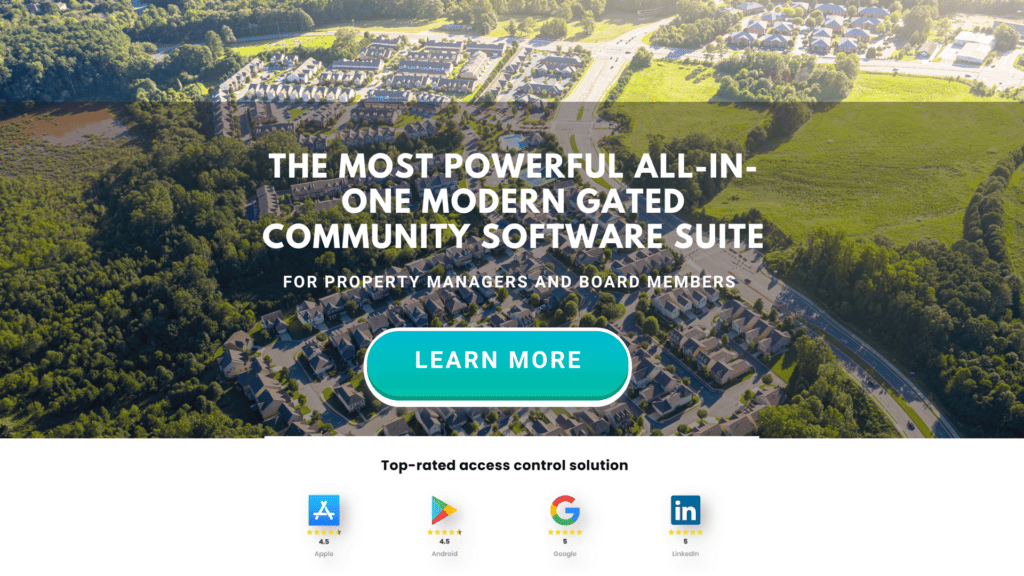HOA security committees are crucial in maintaining a safe, welcoming, and orderly environment for residents in shared communities. Security committee members must be well-prepared and proactive to oversee security measures, manage access control, and handle resident concerns.
In this article, we’ll identify key practices for HOA security committee members, focusing on how they can effectively address security needs, implement access control solutions, and build a stronger, safer community.
IN THIS ARTICLE
- Understanding the Role of an HOA Security Committee
- Best Practices for Effective HOA Security
- Engaging the Community in Security Efforts
- Working with Security Vendors and Local Authorities
- Regularly Reviewing and Updating Security Policies
- Conclusion
Understanding the Role of an HOA Security Committee
The security committee is responsible for setting and maintaining a safety standard within the community. While the board of directors oversees the entire HOA, the security committee is specifically tasked with identifying potential risks, developing safety protocols, and ensuring compliance with security regulations.
Committee members work closely with property managers, security vendors, and residents to create a cohesive security framework that protects the community and provides a sense of safety.
Being a committee member also means staying informed on the latest security trends and legal considerations that affect HOAs. It includes understanding privacy regulations and data protection laws (especially relevant to access control systems that store resident information) and adapting to new security risks or trends in residential communities.
Best Practices for Effective HOA Security
Safety is non-negotiable and the biggest priority for an HOA. Following best practices can help security committee members address challenges, enhance safety, and ensure smooth daily operations. Here are some core practices to focus on:
1. Conducting Regular Security Assessments
Regular security assessments are essential to keep up with evolving security needs. Committee members should schedule evaluations at least once a year, examining every aspect of the community’s security, including:
- Entry points
- Surveillance coverage
- Access controls
- Visitor management
- Lighting
These assessments help identify vulnerabilities and areas where security measures can be improved.
How to Execute a Security Assessment
Start with a community walk-through, noting any potential weak points, like poorly lit areas or unmonitored entrances. Consulting a security professional or vendor can provide valuable insights. A professional audit will evaluate the current systems’ effectiveness and suggest enhancements.
A successful assessment should culminate in a detailed report with actionable recommendations. Sharing these findings with the HOA board and residents builds transparency and demonstrates the committee’s commitment to safety improvements.
2. Implementing and Maintaining Access Control Systems
Access control systems are a cornerstone of HOA security, helping to regulate who can enter the community and ensuring that unauthorized individuals are kept out.
Security committee members should ensure that access control systems are up-to-date, with options like mobile credentials, key fobs, or biometric access for residents.
Choosing the Right Access Control Features
Consider options that integrate well with visitor management systems, like mobile credentials or digital access passes, which enhance convenience for residents while maintaining security.
License Plate Recognition (LPR) is another feature worth considering for gated communities with vehicle access, as it automates vehicle entry and logs activity.
Security committee members should also establish protocols for lost or stolen access devices and outdated credentials to prevent unauthorized individuals from gaining access. Regularly updating these protocols ensures that residents and staff know how to handle access issues, keeping the community secure.
3. Establishing Visitor Management Protocols
Visitor management protocols are essential to avoid unauthorized access and ensure every visitor is accounted for. Establish a transparent process for resident-approved visitors, contractors, and delivery personnel.
Best Practices for Visitor Management
Implement a digital visitor management system that allows residents to pre-authorize visitors and issue temporary access passes. Consider using systems that log visitor entries and notify residents when guests arrive. Time-limited passes are particularly useful, ensuring visitors can’t re-enter without authorization.
In addition, committee members should create guidelines for handling frequent visitors, such as dog walkers or regular service providers, ensuring that repeated access remains secure without inconveniencing residents.
4. Using Technology for Real-Time Monitoring
Modern technology allows for real-time monitoring, which can significantly enhance community security. Security committee members should look into options like remote camera monitoring, motion-activated surveillance, and alert systems that notify managers of any unusual activity.
Integrating Surveillance with Access Control
Linking surveillance with access control allows security personnel to monitor entry points in real-time. When someone accesses the community or specific facilities, cameras can capture the activity, ensuring that all movement is recorded and retrievable for future reference.
A real-time monitoring system can also streamline emergency response efforts, as property managers and security teams are instantly alerted to potential threats. Systems that send notifications directly to security personnel’s mobile devices help ensure issues are addressed quickly, enhancing overall response efficiency.
Engaging the Community in Security Efforts
A strong security system relies not only on technology but also on resident participation. Security committee members can encourage a strong community by engaging residents in security efforts.
1. Hosting Security Education Events
Educating residents on security practices and community policies helps them understand their role in keeping the community safe. Consider hosting regular events, such as safety workshops or meetings that cover topics like emergency preparedness, self-defense, and how to report suspicious activity.
Tips for Successful Security Events
Use these events to inform residents about new security features, like access control updates or visitor management procedures. Demonstrations can help residents effectively understand how to use mobile access, digital passes, or visitor pre-approval tools.
Consider distributing informative materials, like security handbooks, that residents can keep at home. These resources can include guidelines on everything from reporting suspicious activity to using the community’s access control systems.
2. Encouraging Resident Feedback and Reporting
Residents are the eyes and ears of the community, and encouraging them to report concerns can help the committee address issues promptly. Make it easy for residents to report suspicious behavior, security gaps, or access issues. Consider implementing an anonymous reporting option for added comfort.
Benefits of Resident Involvement
Residents actively participating in community security creates a sense of responsibility and trust. If encouraged properly, it creates benefits like:
- Heightened awareness: Engaged residents are more likely to notice and report unusual activities, leading to faster resolutions of potential threats.
- Improved communication: Open dialogs between residents and the security committee help quickly identify and address security concerns, alleviating fears.
- Shared responsibility: Involvement fosters a sense of ownership over community safety, encouraging cooperative behavior and adherence to security measures.
- Proactive solutions: Residents can identify vulnerabilities from unique perspectives, allowing the committee to implement preventative measures.
- Stronger community bonds: Working together to ensure safety strengthens social ties and creates a unified community atmosphere.
Working with Security Vendors and Local Authorities
Collaborating with trusted security vendors and local law enforcement ensures the community is well-protected by internal and external resources.
1. Choosing the Right Security Vendors
Selecting the right security vendors is essential for effective access control, surveillance, and emergency response capabilities. Look for vendors with experience in HOA communities and technologies like mobile access, cloud-based monitoring, and visitor management integration.
Ask potential vendors about their response times, support services, and the scalability of their systems. Consider vendors who offer ongoing training for community staff and have reliable customer support to assist with system troubleshooting.
2. Collaborating with Local Law Enforcement
Establishing a connection with local police and fire departments can be incredibly valuable. Invite them to community events or ask them to conduct safety training sessions. A good relationship with law enforcement can lead to faster response times and a better understanding of the community’s layout and needs.
Inviting law enforcement to conduct safety inspections can also be beneficial, as they can identify additional security measures or adjustments that enhance community protection.
Regularly Reviewing and Updating Security Policies
Security is an evolving field; therefore, the policies that guide it should be updated accordingly. Committee members should review and update security policies annually or whenever significant changes to community needs or security technology exist.
Stay current with new security technology and trends. Regularly consult with residents to see if there are any areas of concern and adapt policies as needed. For instance, as more residents begin using mobile access, you may need to revise policies to ensure data privacy and secure mobile credential management.
Conclusion
Security committee members play an essential role in safeguarding HOA communities. By following these best practices—conducting regular assessments, implementing access control systems, engaging residents, and working with trusted vendors—HOAs can create a secure and welcoming environment for all.
Effective security practices do more than protect property; they build trust, enhance resident satisfaction, and create a strong sense of community.


